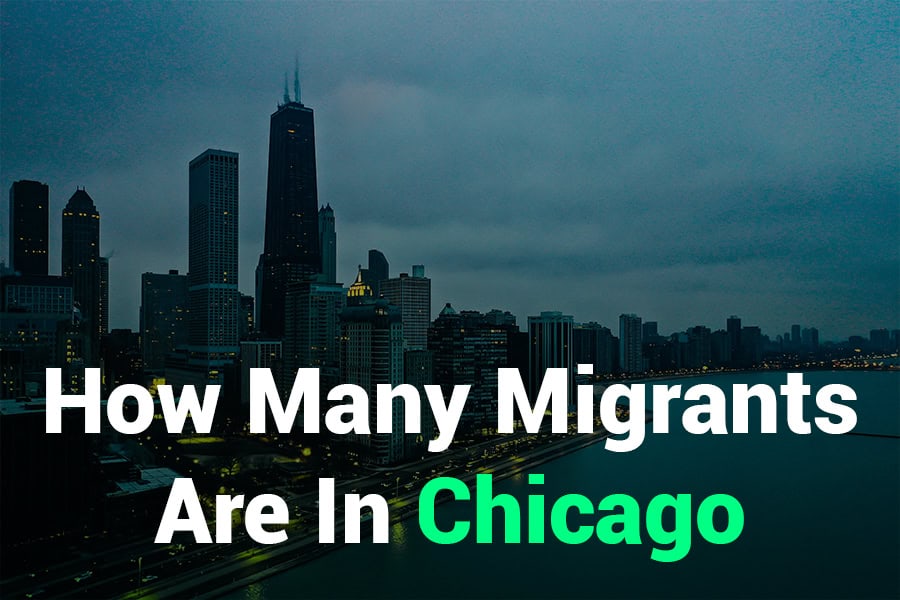Chicago, often called the “Windy City,” has a long history as a hub for migrants worldwide. Its diverse communities and economic opportunities attract people from various backgrounds, including international immigrants, domestic migrants, and refugees. Understanding the number of migrants in Chicago involves analyzing data across multiple sources, considering both documented and undocumented populations. The city has taken center stage in national discussions about immigration policy, human rights, and the local labor force. In this article, we’ll delve into the statistics, trends, and implications of the migrant population in Chicago as of 2024.
How Many Migrants Are in Chicago?
Chicago has a significant migrant population, which includes a mix of documented and undocumented individuals from diverse backgrounds. As of 2024, the city’s migrant population is estimated to be around 850,000, influenced by factors like job opportunities, education, and community support. With evolving migration trends, Chicago remains a focal point of domestic and international migration in the United States.
Current Population of Migrants in Chicago
The number of migrants in Chicago fluctuates based on various factors such as economic conditions, policy changes, and global events. The city is home to approximately 850,000 migrants, including international immigrants, refugees, and domestic migrants from other U.S. states. These figures include both documented and undocumented populations, reflecting Chicago’s status as a sanctuary city. Over the past decade, the city has seen an increase in migrants from Central America, Asia, and Africa, contributing to its cultural diversity. Chicago’s neighborhoods, such as Pilsen, Little Village, and Rogers Park, are vibrant with migrant communities that enrich the city’s social fabric. While Chicago has faced challenges related to housing, employment, and education for migrants, it also benefits from the skills, entrepreneurship, and cultural contributions brought by the migrant population.
Why Do Migrants Choose Chicago?
- Economic Opportunities: Chicago offers diverse job opportunities, especially in manufacturing, hospitality, health services, and retail. The city’s robust economy is one of the major attractions for both domestic and international migrants.
- Educational Facilities: Chicago has renowned universities and colleges, making it a prime destination for students. Migrants seeking higher education or vocational training also find Chicago’s educational infrastructure highly appealing.
- Community Support: Chicago has strong immigrant communities that provide support networks for new arrivals. These communities help migrants find housing, jobs, and educational opportunities, making the transition smoother.
- Sanctuary Policies: As a sanctuary city, Chicago provides certain protections for undocumented migrants, ensuring they have access to city services regardless of immigration status.
- Cultural Attractions: Chicago’s cultural scene, with its diverse festivals, events, and ethnic neighborhoods, makes it an attractive place for migrants who wish to connect with people from similar backgrounds.
Challenges Faced by Migrants in Chicago
- Housing Instability: Migrants often face difficulty finding affordable housing in Chicago due to limited income and the competitive real estate market.
- Employment Barriers: Despite the economic opportunities, many migrants encounter challenges like language barriers, lack of recognition for foreign qualifications, and workplace discrimination.
- Healthcare Access: While there are programs to assist undocumented migrants, accessing comprehensive healthcare remains a challenge for many due to fear of deportation or lack of awareness.
- Legal Issues: Navigating the complex legal landscape, especially for undocumented migrants, is a significant challenge, including risks of detention or deportation.
- Education Gaps: Migrant children and youth often struggle to keep pace with the curriculum due to language barriers, socio-economic factors, and adjusting to a new educational environment.
Impacts of Migrants on Chicago’s Economy and Society
Migrants play a crucial role in Chicago’s economy, contributing to agriculture, manufacturing, and service industries. They often fill labor gaps, particularly in lower-wage jobs essential to the city’s functioning. Migrants also contribute significantly to entrepreneurship, with many small businesses owned by first-generation immigrants. Socially, migrants bring cultural diversity, promoting multiculturalism and tolerance in Chicago. Migrant communities often lead local initiatives, creating more inclusive neighborhoods. However, there are also challenges, such as strain on public services like schools and hospitals, requiring the city to balance resources and support.
How Many Migrants Are in Chicago: Recent Trends & Future Projections
- 2024 Population Trends: In 2024, Chicago has seen a slight increase in migrant numbers compared to previous years. Political instability and economic challenges in Venezuela, Afghanistan, and Haiti have contributed to this rise.
- Future Projections: Experts predict that Chicago’s migrant population will continue to grow, potentially reaching 900,000 by 2030. This projection considers both legal and undocumented arrivals, with policy changes at the federal level likely to impact these numbers.
- Government Initiatives: Local and non-profit organizations have introduced new programs to support migrants, including job training, language classes, and legal assistance.
- Impact of Immigration Policies: Federal and state policies significantly impact the flow of migrants into Chicago. Changes in asylum policies, visa regulations, and enforcement measures can alter migration trends.
- Demographic Shifts: Chicago may experience demographic changes, with younger, working-age migrants making up a larger portion of the population. This could potentially impact the labor market and social services.
Conclusion
The question, “How many migrants are in Chicago?” reflects a complex reality shaped by diverse factors, including economic conditions, social support networks, and immigration policies. The migrant population adds to the city’s workforce and enriches its cultural landscape, driving innovation and entrepreneurship. As Chicago continues to adapt to migration trends, addressing the needs and challenges of this community will be crucial for sustainable development.
FAQs
Q. What is the current migrant population in Chicago?
A. Chicago’s migrant population is estimated to be around 850,000, including both documented and undocumented individuals.
Why do migrants prefer Chicago over other cities?
A. Chicago offers economic opportunities, community support, educational facilities, and sanctuary city policies that make it appealing to migrants.
What challenges do migrants face in Chicago?
A. Migrants often face housing, employment barriers, healthcare access, legal complexities, and education issues.
How does the migrant population impact Chicago’s economy?
A. Migrants contribute to various sectors, fill labor gaps, boost entrepreneurship, and enhance cultural diversity.

